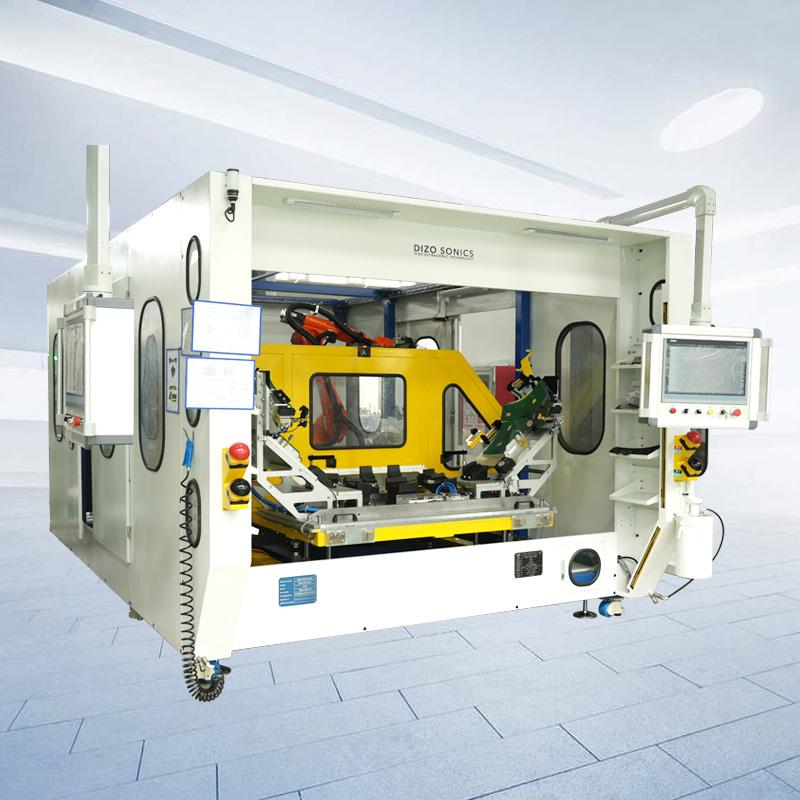The automotive industry has always been at the forefront of technological innovation, constantly evolving to meet the growing demands of safety, efficiency, and sustainability. One of the most significant developments in recent years has been the integration of automatic plastic welding machines into vehicle manufacturing processes. These advanced machines bring together automation and precision, allowing manufacturers to produce stronger, lighter, and more cost-effective components. As cars rely more heavily on plastic parts for weight reduction and fuel efficiency, the role of these machines continues to grow in importance, shaping the future of automotive production.
The Growing Demand for Plastic Components in Automobiles
Automotive manufacturers are increasingly turning to plastics to replace heavier materials such as steel and aluminum. Plastics offer numerous advantages including corrosion resistance, design flexibility, and reduced overall vehicle weight. This shift has created a demand for highly reliable welding solutions that can ensure the durability and safety of these components. Plastic parts such as bumpers, dashboards, fuel tanks, and door panels are now essential elements of modern vehicles, and their assembly requires welding technology that guarantees accuracy and strength. Automatic plastic welding machines provide exactly this capability, making them indispensable to the industry.
Precision Engineering in Plastic Welding
Precision is vital in automotive manufacturing, where even the smallest error can compromise safety or performance. Advanced welding machines are designed to deliver consistent results by using sophisticated sensors, monitoring systems, and software controls. These tools enable manufacturers to maintain exact specifications during production, ensuring that every weld is uniform and meets rigorous quality standards. By reducing the risk of defects, precision welding enhances both the reliability of vehicles and the reputation of the manufacturers who produce them.
Automation Enhancing Efficiency and Productivity
The incorporation of automation in plastic welding processes has revolutionized production lines. Automated systems reduce reliance on manual labor, which not only lowers costs but also eliminates human error. High-speed robots integrated with welding machines can perform repetitive tasks with unmatched efficiency, ensuring seamless production of thousands of components daily. Automation also enables flexible manufacturing, allowing companies to switch between different models and parts quickly without disrupting production schedules. The result is a faster, more adaptable, and cost-effective operation that meets market demands.
Technological Advancements Driving Innovation
Continuous innovation in welding technology is driving the automotive sector toward a more sustainable and efficient future. Modern welding machines are equipped with advanced control panels, real-time data tracking, and energy-efficient systems. They can adapt to a wide variety of plastics, including new composite materials that are increasingly used in lightweight vehicle designs. Additionally, innovations such as ultrasonic welding, vibration welding, and laser welding are enabling manufacturers to create stronger bonds with less material waste and lower energy consumption. These advancements highlight how technology is pushing the boundaries of what automotive plastic welding can achieve.
Sustainability and Environmental Benefits
Sustainability is now a core objective in automotive manufacturing, and welding machines play a key role in meeting these goals. By improving accuracy and reducing waste, automatic welding systems contribute to more efficient use of raw materials. Energy-efficient models help lower the overall carbon footprint of production facilities, aligning with global initiatives to create greener industries. Furthermore, the ability to weld recycled plastics with precision opens new doors for sustainable car design, supporting a circular economy within the automotive sector.
The Future Outlook of Automotive Plastic Welding Machines
Looking ahead, the role of automatic plastic welding machines in the automotive industry will only continue to expand. As vehicles become more advanced with electric and autonomous designs, manufacturers will require even more lightweight plastic components to optimize performance and efficiency. Welding technology will evolve alongside these changes, incorporating artificial intelligence, predictive maintenance, and advanced robotics. These improvements will ensure that welding remains a cornerstone of automotive production, enabling manufacturers to keep pace with rapid technological transformation and consumer expectations.
Conclusion
The future of automotive plastic welding is a story of automation, precision, and innovation. Automatic plastic welding machines have already transformed the way vehicles are manufactured, offering unmatched efficiency, accuracy, and sustainability. As the automotive sector embraces new materials, advanced designs, and eco-friendly practices, these machines will play an increasingly vital role. Their ability to combine automation with precision ensures that manufacturers can deliver vehicles that meet the highest standards of safety, performance, and environmental responsibility. The evolution of welding technology is not just a part of automotive manufacturing—it is a driving force that shapes the industry’s future.



